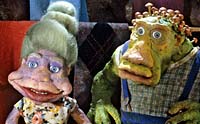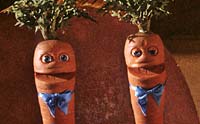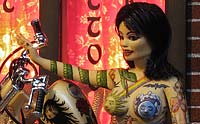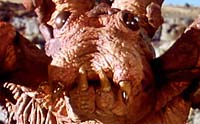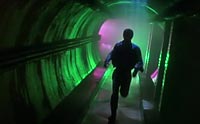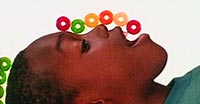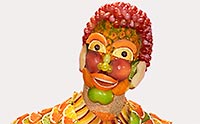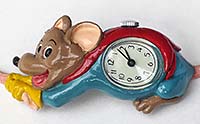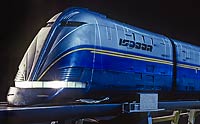Disney's Dinosaur: My Journey

In 1995, Walt Disney Feature Animation started a small computer character animation division with the goal of creating a proof of concept short film about dinosaurs. The purpose of the project was to test various methods that could be used to make a full-blown CGI feature film. I was hired as an animator for this test project, even though I had not yet worked professionally in computer graphics. Animation Director Eric Leighton recommended me for the position based on our previous work together on The Nightmare Before Christmas and my personal experience teaching myself the basics of CGI in my free time. This project marked the most transformative period in my animation career and reflected the changes happening at Disney as well. What began as a small crew of 30 people for the test project ultimately grew into a state-of-the-art digital studio of 350 artists, animators, and technical experts over the next four years. During this expansion, I became an Animation Supervisor and mentor for Disney's feature film Dinosaur!
When I first started on the dinosaur test project, it was a sink or swim situation as there was no one to teach me the animation software, Softimage, or the command-line operating system UNIX. I was given manuals for Softimage and some basic UNIX commands and then left to figure it out on my own. I was assigned several close-up shots of the Iguanodon dinosaur to animate as I learned the software. I did ask for help when needed, and most members of the crew were generous with their advice. However, there were a few people who seemed to resent my presence as an "analog" animator breaking into the computer realm, which had previously been dominated by tech professionals. Despite this, the advent of user-friendly software offered new opportunities for artists and animators and was the way of the future.
The dinosaur test was completed in 1996 and deemed successful. That led to the greenlighting of the feature film by Disney president Michael Eisner even though a working script was not yet ready. This required a massive and expensive undertaking, including creating a digital studio from scratch and finding qualified personnel to staff it. At that time, there were very few CGI character animators in the world so the only option was to train traditional cartoon and stop-motion animators. Disney hired a teacher, Thomas Wiegand, to instruct all the new recruits in the basics of the Softimage animation software. As a result, the new hires actually had an easier transition to computer graphics than I did.
In the meantime, I continued animating more tests, which impressed the producers enough to promote me to Supervising Animator. Under the Disney system, each major character in their movies required a Supervising Animator, similar to the casting of an actor for a role. I was assigned as the Supervising Animator for Neera, the love interest, as well as all of the juvenile dinosaurs. Disney took the role of Supervising Animators seriously as we were considered management. As a result, I was required to attend management training seminars as part of my job.


The animation team continued to expand so we were all learning and growing together. For over a year, we animated tests aimed at improving our skills and we received critiques from Eric Leighton who was, by then, the Co-Director of the movie. There was a wonderful feeling of camaraderie from working together toward a shared goal.
Eventually, Disney chose a building to house all of the producers, directors, animators, writers, modelers, artists, lighters, compositors, and technicians for the project. The building was an historical one, near the Burbank airport, that was formerly known as Skunk Works where Lockheed Martin had created a number of aircraft designs. Disney re-named the facility "Feature Animation Northside" to distinguish it from the cartoon animation location several miles south on the Disney Studio lot. The cost must have been astronomical as each employee workstation, with software and advanced SGI computers, cost upwards of $60,000 each. Professional computers were much more expensive back then.
Eleven Supervising Animators were cast for the different characters in Dinosaur. In due course, the Supervisors were able to start choosing their character team members under the Disney system called "baseball trading." While the other Supervisors were scrambling to acquire the most experienced animators for their teams, I chose a different path. There were two newcomers, hired as trainees who had never worked in animation before, whom I thought had tremendous potential. They were Rebecca Wilson Bresee and Tony Smeed. I wanted them for my team but in order to arrange that they had to go through a formal mentorship program to become official Disney animators. Accordingly, I agreed to be both their Supervisor and Mentor at the same time. That arrangement worked out really well. It is worthy of note that both Tony and Rebecca are still working at Disney to this day as top-tier animators. It pleases me to know that they have been so successful.
As we ramped up into full production, we started with the opening sequence of the movie which featured the traveling egg. That section had no dialogue (a good thing), primarily because the script was not ready. The entire animation crew was up to the task by then and did a fantastic job. My team was responsible for animating the cute, curious juvenile Parasaurolophus. The completed sequence was a visual feast which, combined with the magnificent score by James Newton Howard, resulted in arguably the best sequence in the entire movie!
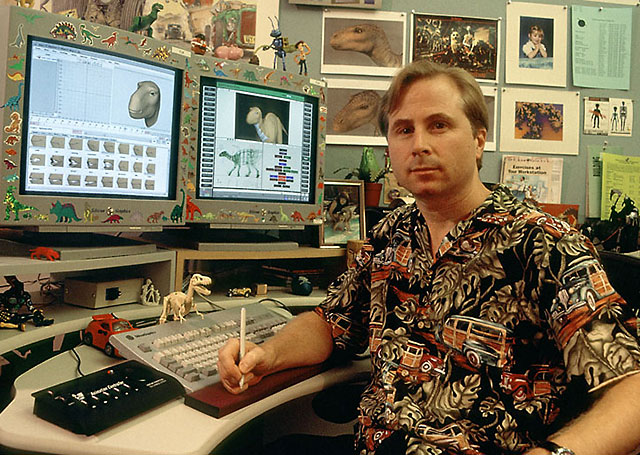
After an approved script was finally written, the crew moved forward with the long process of bringing the story to life. It is important to note that animated features are a collaborative effort involving many people and departments. This can result in "committee decisions" about the aesthetics of the project where no one has total freedom from influence, even the Directors. All the individual animators can do is strive to do their best work within the established hierarchy. There were quotas to meet and overtime was sometimes required. Personally, I had a full animation quota to meet in addition to supervising my team. Nevertheless, I always completed my shots by the deadline with only minimal weekday overtime. In fact, I never had to work on a weekend during my entire stay at Disney. That might be a record.
The main challenge in animating Neera was to convey femininity while still maintaining a sense of her weight and mass. I designed her walk cycle to include a hint of sexiness that my team could incorporate into each shot that required it. Neera had delicate and smooth facial features, which limited her expressions compared to the other dinosaurs. We had to be careful not to push her expressions too far as it would make her appear unattractive which would not be suitable for a love interest. In general, we aimed for subtle acting motion similar to a real actor, rather than a cartoony approach.
As the completion of Dinosaur neared in 1999, the crew members began to wonder about their future positions as there were no plans for another CG movie at the studio. Upper management, caught off guard, hastily began pre-production on a project called Wild Life, which was intended to be the next Disney CG movie. Unfortunately, after a year of development, the project was cancelled due to inappropriate content. Morale at the studio was low and layoffs soon followed. Almost the entire crew from Dinosaur was let go except for a few of the lowest-paid employees and those who were politically favored. I briefly worked on the cartoon animated film Home on the Range but my contract was not renewed in 2001. The Feature Animation Northside building was rebranded as "The Secret Lab" and functioned as a VFX facility for the next year before shutting down completely. It was a difficult period for Disney Feature Animation.
The release of Dinosaur in 2000 had a significant impact on my career. It was a successful film at the box office, and I am proud to have been a part of its creation. My career path changed significantly after its release as I abandoned stop-motion animation in favor of CGI. Unfortunately, I never had the opportunity to work with Disney again; however, I am an individualist at heart so going back to freelance work suited me well.

Dinosaur © 2000 Walt Disney Company






